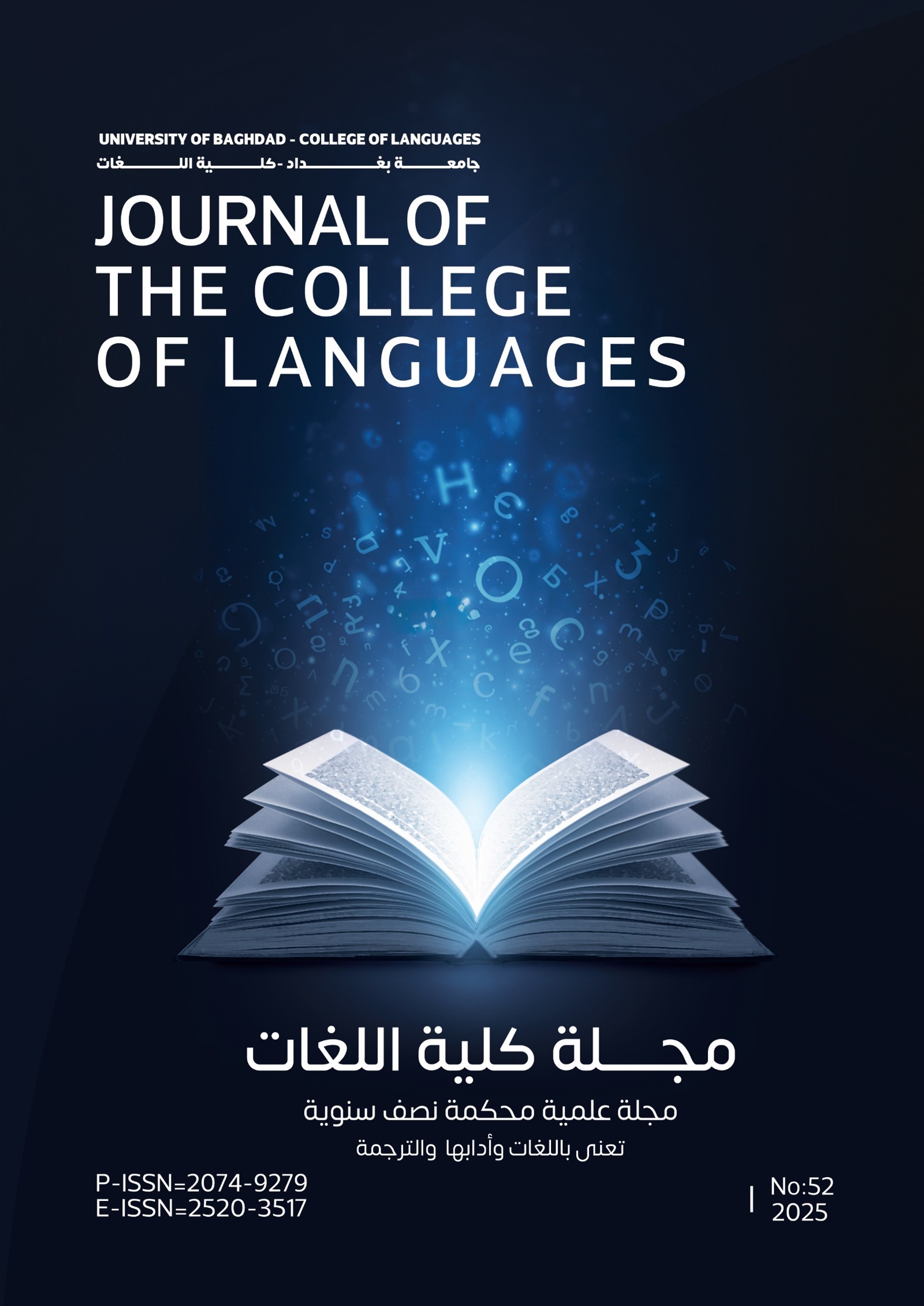The Inner Wasteland in Selected Later Plays of Samuel Beckett
DOI:
https://doi.org/10.36586/jcl.2.2022.0.46.0001Keywords:
wasteland, memory, identity, inaction, lonelinessAbstract
The inner wasteland can be observed in Samuel Beckett’s early and later plays. His characters suffer from loss of identity, emotions, and sense of time. They lead a life of failure, repetition, inaction, loneliness, doubt, suffering, and nothingness. The inner wasteland includes many aspects, such as the multi and split identity, the habitual repetitive element of life, the dark sorrowful life the characters lead, lack of communication and relations among them, their unfree, inactive condition, their foggy terrible recollections, loneliness, dryness of love, and uncertainty. The analysis and the illustration of each aspect will show how the inner wasteland is intensified in the selected later plays of Beckett.
References
Al-Hasani, Saad, and Lamia Al-Ani. (1992). “Footfalls: Problems and Language” [Unpublished
manuscript]. University of Baghdad.
Beckerman, Bernard. (1986). “Beckett and the Act of Listening.” Beckett at 80. Ed. Enoch
Brater. New York: Oxford U P.
Beckett, Samuel. (1956). Waiting for Godot. London: Faber.
---. (1971). Breath and Other Shorts. London: Faber.
---. (1977). Ends and Odds: Plays and Sketches. London: Faber.
---. (1978). Not I. London: Faber.
---. (1982). Three Occasional Pieces. London: Faber.
---. (1984). Collected Shorter Plays. London: Faber.
Brater, Enoch. (1987). Beyond Minimalism: Beckett’s Late Style in the Theatre. Oxford:
Oxford U P.
---. (1989). Why Beckett. London: Thames and Hudson.
Carey, Phyllis. (1988). “The Quad Pieces: A Screen for the Unseeable.” Make Sense Who May:
Essays On Samuel Beckett’s Later Works. Eds. Robin J. Davis and Lance Butler. Buckinghamshire: Colin Smyth Limited.
Coe, Richard. (1964). Samuel Beckett. London: Oliver and Boyd LTD.
Cohn, Ruby. (1973). Back to Beckett. Princeton: Princeton U P.
---. (1980). Just Play: Beckett’s Theatre. Princeton: Princeton U P.
Esslin, Martin. (1968). The Theatre of the Absurd. London: Penguin Books.
Feidelson, Charles, and Richard Ellmann. (1965). The Modern Tradition: Backgrounds of
Modern Literatures. New York: Oxford U P.
Fletcher, Beryl et. al. (1978). A Student’s Guide to the Plays of Samuel Beckett. London: Faber.
Gantarski, S. E. (1984). “Quad I and II: Beckett’s Sinister Mime (s).” Journal of Beckett Studies
, (August): 137-138.
Jackson, S. (1992). “Performing the Performance of Power in Beckett’s Catastrophe.” Journal of
Dramatic Theory and Criticism 6, (Spring): 23-41.
Libera, Antoni. (1985). “Beckett’s Catastrophe.” Modern Drama 30, (September): 332-337.
Lyons, Charles R. (1983). Samuel Beckett. London: The Macmillan P LTD.
Marcoulesco, Ileans. (1993). “Beckett and the Temptation of Solipsism.” The Beckett Studies.
Ed. S. E. Gontarski. Florida: Florida U P.
Mcmullan, Audrey. (1987). “The Space and Play in L’ Impromptu d’ Ohio.” Modern Drama 30,
(March): 23-34.
O’Gorman, Kathleen. (1988). “The Speech Act in Beckett’s Ohio Impromptu.” Make Sense Who
May: Essays On Samuel Beckett’s Later Works. Eds. Robin J. Davis and Lance
Butler. Buckinghamshire: Colin Smyth Limited.
Rosen, Alan. (1993). “Ends and Means: Catastrophe in the Context of Dramatic Form and
Theory.” Samuel Beckett Today 8, (April): 327-333.
Sandary, Robert. (1988). “A Political Perspective on Catastrophe.” Make Sense Who
May: Essays On Samuel Beckett’s Later Works. Eds. Robin J. Davis and Lance
Butler. Buckinghamshire: Colin Smyth Limited.
Worth, Katharine. (1978). The Irish Drama of Europe From Yeats to Beckett. London: The Athlone P.
Downloads
Published
Issue
Section
License
Copyright (c) 2022 Journal of the College of Languages (JCL)

This work is licensed under a Creative Commons Attribution 4.0 International License.








